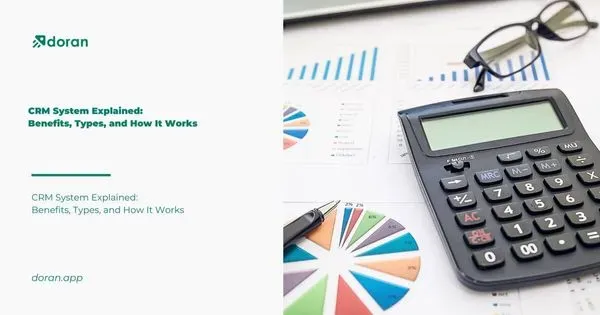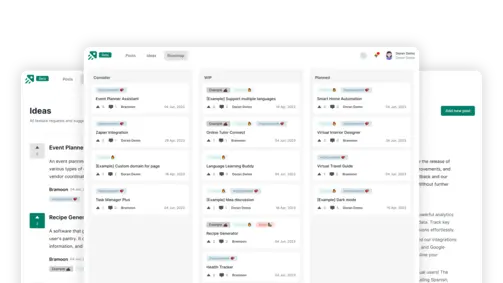From Vision to Achievement: Business Strategy Roadmap
Create changelog and product roadmap for your product
Explore nowTable of contents 6 min
In the ever-evolving business landscape, a well-crafted business strategy roadmap is the key to unlocking sustainable growth and success. This article delves into the significance of a business strategy roadmap, providing insights into how organizations from various industries leverage these roadmaps to align their strategic vision, adapt to change, and achieve their long-term objectives. Whether you’re a business leader, entrepreneur, or strategist, these real-world examples offer a blueprint for navigating the complexities of the business world. Join us as we explore inspiring cases of strategic planning and execution that drive business success.
What is a Business Strategy Roadmap?
A tool that helps you reach your long-term strategic goals and carry out your business strategy is a business (or company) roadmap. Business strategy roadmaps are a tool used by product and company leaders to convey an organization’s goals and ambitions at every stage of growth, from early-stage startups to well-established enterprise corporations.
Read more: Charting Success with Zero Cost: Best Roadmap Tools Free
A Business Strategy roadmap: Who Uses it?

A copy of your business roadmap will be useful to everyone who has a stake in the success of your firm. Consider a business roadmap as a guide that all stakeholders can support and adhere to, as it serves as a visual representation of the organization’s aims and objectives. The following individuals and groups can benefit from using a business roadmap:
-
Business owners
-
Consultants
-
Entre
-
.preneurs
-
Executives
-
Marketing teams
-
Product managers
-
Sales teams
-
Startup founders
-
Venture capitalists
What Distinguishes a Business Strategy Roadmap from a Business Plan?

A business plan is a fundamental and comprehensive document that is often written at the beginning of any organization. It is particularly helpful for startup businesses and is crucial to managing a firm. When entering new markets or launching products that radically alter their business model, more established companies stand to gain from revising or starting from scratch their business plan.
Business plan
Format
A business plan is a written document that outlines the company’s operations. Making it as brief as possible is a recommended practice. However, a business plan typically has more than ten pages because of the enormous volume of information it provides. Depending on the intricacy of the company and its products, you can alternatively want to keep it simple and make a brief slide deck.
Components
Usually included in a business plan are the following:
-
An executive summary: a brief section that contains the company’s vision and mission statements along with information about its location and workforce.
-
Products and services: A summary of what the business offers, together with information on pricing, exclusive technology, and manufacturing. Documentation of the profit method (transactional, freemium, subscription, etc.) is also necessary.
-
Market: An outline of the competitive environment, the industry, and customer demand for the company’s goods and services, usually including a SWOT analysis and competitor profiles.
-
Marketing strategy: A high-level overview of the ways in which the business will use different marketing initiatives and distribution methods to reach and draw in potential clients.
-
Acquisition strategy: An explanation of the distinct approach you will take to attract, interact with, and keep clients.
-
Financials: While an existing business may offer bank records, balance sheets, or other financial details, a startup business will include predictions for desired revenue.
-
Budget: Personnel costs, product development and research expenses, marketing costs, and other business costs.
Audience
A business plan is mostly used by executives and top leaders, who then discuss it with internal teams. However, there can also be circumstances in which you must provide your business plan to other interested parties, such as:
-
Banks
-
Investors
-
Partners
-
Suppliers
Business Strategy roadmap
Let’s now concentrate on a business strategy roadmap. A business strategy roadmap shows particular elements of your plan in a time-series format. It provides high-level information on ongoing and prospective projects. It is a valuable tool for assessing how well the business is doing in terms of fulfilling its business strategy.
Format
A business strategy roadmap is an outline that shows the strategic goals and projects of an organization. Everything that is displayed on your business strategy roadmap is an indication of the tasks that your organization has decided to prioritize and finish.
Components
The following data is commonly included in a business strategy roadmap and is arranged in either vertical or horizontal swimlanes:
-
Objectives: Achievable targets, like growth or income.
-
Initiatives: Main topics of focus or areas of funding that help achieve organizational objectives.
-
Milestones: Notable instances of advancement.
-
Dependencies: Things like related work items or outside stakeholders that need to be finished before anything else can begin or that could impede development.
Audience
Senior leaders often develop business strategy roadmaps, which are sent to functional teams like products to assist them in their planning. On the other hand, you might create variations of a business strategy roadmap to distribute to:
-
Customers
-
Investors
-
Partners
Find out more: Business Roadmap Template: Guiding Your Business Journey
Business Strategy Roadmap Types

Every functional area, including marketing, IT, and product management, should have its own roadmap. You can occasionally require various business strategy roadmap formats or perspectives for various audiences. These are targeted at more established businesses, in contrast to a startup roadmap. Here are a few instances:
A Roadmap for Business Development
Strategic expansion plans are outlined in a business development roadmap. This might cover items like new alliances, channels of sales, or changes in the market.
A Roadmap for Business Intelligence
The tracking and planning of all business operations is the main goal of a business intelligence roadmap. This might include deliberate actions taken to influence performance, such implementing new technology, managing change, or improving processes.
As we wrap up our exploration of the business strategy roadmap, it’s clear that roadmaps are not just planning tools; they are dynamic instruments that organizations use to navigate the complexities of the business landscape. By integrating the insights from this guide, you’re poised to not only understand the strategic value of business strategy roadmaps but also to implement them as dynamic tools for enhancing decision-making, productivity, and agility in your journey towards business success.
What to not miss out on our blog
Gain insightful knowledge and invaluable experiences from dedicated experts.

CRM System Explained: Benefits, Types, and How It Works
Discover everything about CRM system. Learn the benefits and how a CRM system works to improve customer relationships and streamline business operations.

Are you ready? Start your free trial today.
Enhance communication, keep track of the progress, understand customers' insight and more by taking your first trial on Doran.
Sign up for free

